Review Of Intel’s 13th Generation Processors From The Perspective Of Major Technology Media
Experts Say That Reptorlik Processors Are “The Most Powerful And Valuable Desktop Processors In The World”; But They Get Too Hot In Heavy Processing.
Intel’s 13th Generation Processors, Intel introduced the fifth Mehr Raptorlik as the 13th generation of desktop-class processors. Raptorlic processors rely on a hybrid architecture that Intel has been using since the 12th generation. In this architecture, instead of identical cores, two types of substances are used, one focused on processing power and the other on energy consumption.
The high-power (P) and low-power (E) cores of the 13th generation processors intelligently divide processing tasks through Intel Thread Director. Intel says the Thread Director is a microcontroller inside the processor that monitors threads and ensures they run on the correct core.
The Intel Thread Director tool requires version 22H2 or later versions of the Windows 11 operating system.
The Thread Director microcontroller does not perform well with Windows 10, and even in the latest version of Windows 11, it does not function optimally. Still, its performance in the new Microsoft operating system is satisfactory.
Raptorlic series processors are considered the second most crucial desktop series this year. A few months ago, AMD entered the new generation earlier than Intel with the Ryzen 7000 series; Processors based on the advanced Zen 4 architecture are compatible with the new AM5 socket.
AMD’s new processors have been well received by experts and have put AMD ahead of Intel as the most powerful desktop CPU, at least for a short while. Now it’s time for Intel to respond to AMD with the Reptorlik series.
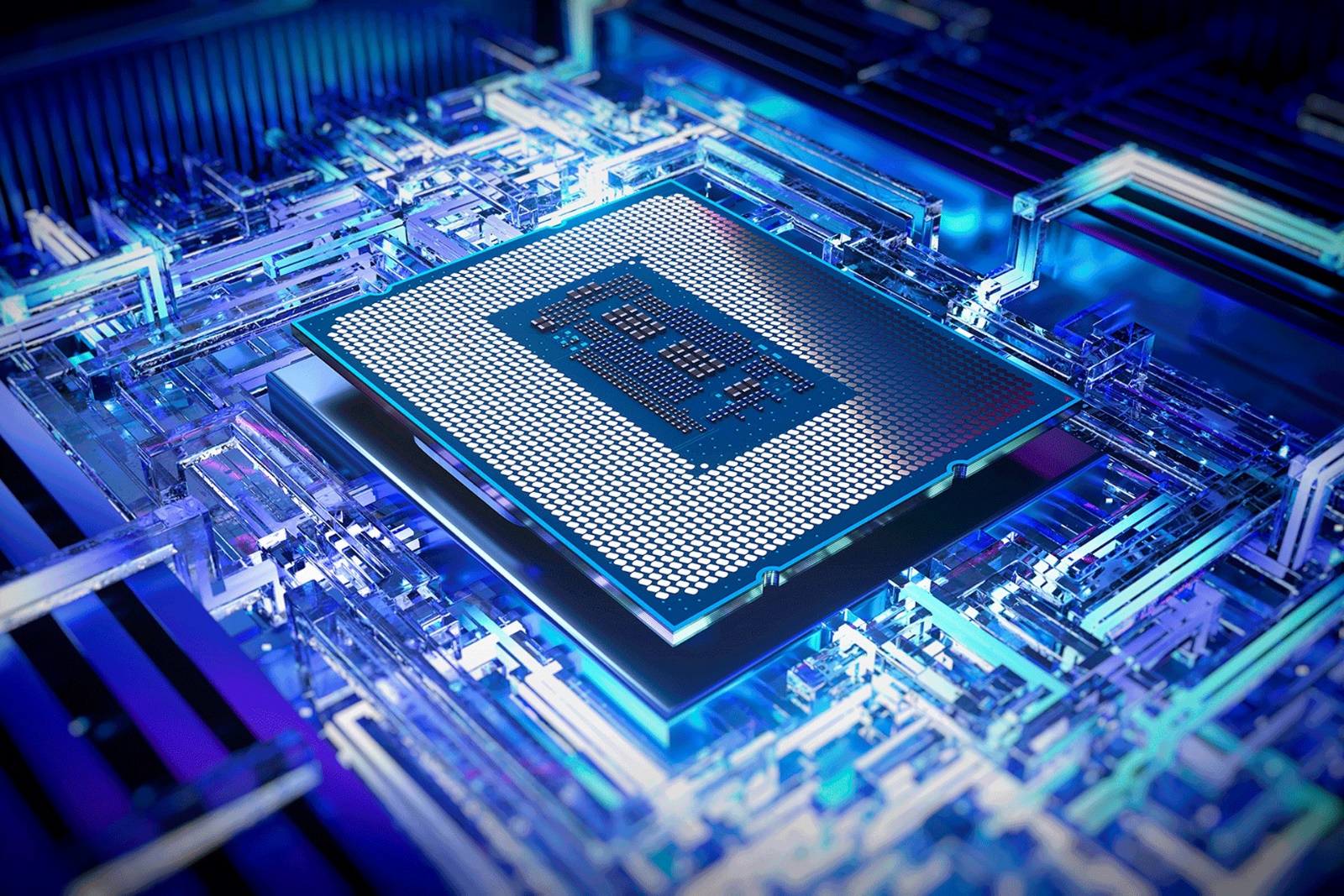
Intel’s approach since the 12th generation is similar to what Apple is doing with its proprietary processors based on the ARM architecture. Instead of equipping the processors with high-power cores, using the second type of core decreases the final energy consumption of the processor. Of course, Raptorlik 13th-generation processors consume more energy in turbo mode than Alderlik 12th-generation processors.
Raptorlik is based on the same successful formula as Alderlik
Intel’s hybrid architecture in the 12th generation had positive results, and the re-appearance of this architecture in the Raptorlic series was expected; Of course, Intel has changed the microarchitecture of the cores to make them more powerful and optimized.
The most potent 13th-generation Intel Core i9-13900K processor is sold for $589. The 13th gen flagship is the same price as the 12900K (the 12th gen flagship), despite Intel’s warnings about the processor’s price increase.
Intel’s 13th-generation processors, based on the x86 architecture and Intel 7 lithography (10nm class), are available in a total of 22 models. Intel said that the 13th generation flagship is up to 15% stronger in single-threaded processing and 41% stronger in multi-threaded processing than the previous generation. The first series of Raptorlic processors includes three models with the suffix K and three with the KF. K series products are for those looking for a potent processor for gaming systems.
Technical specifications of 13th-generation Reptorlik processors | |||||||||
|---|---|---|---|---|---|---|---|---|---|
| Model | Core (high power / low consumption) | reply | The base frequency of high-power cores / Base frequency of low-power cores | Boost frequency of high-power cores / Boost frequency of low-power cores | Smart cache (L3) | The basic power of the processor | Maximum processor power | Graphics unit | Price |
| Intel i9-13900K | ۲۴ (۸ / ۱۶) | ۳۲ | 3.0 GHz / 2.2 GHz | 5.8 GHz / 4.3 GHz | 36 MB | 125 watts | 253 Watts | Intel UHD Graphics 770 | $589 |
| Intel i9-13900KF | ۲۴ (۸ / ۱۶) | ۳۲ | 3.0 GHz / 2.2 GHz | 5.8 GHz / 4.3 GHz | 36 MB | 125 watts | 253 Watts | does not have | $564 |
| Intel i7-13700K | ۱۶ (۸ / ۸) | ۲۴ | 3.4 GHz / 2.5 GHz | 5.4 GHz / 4.2 GHz | 30 MB | 125 watts | 253 Watts | Intel UHD Graphics 770 | $409 |
| Intel i7-13700KF | ۱۶ (۸ / ۸) | ۲۴ | 3.4 GHz / 2.5 GHz | 5.4 GHz / 4.2 GHz | 30 MB | 125 watts | 253 Watts | does not have | 384 dollars |
| Intel i5-13600K | ۱۴ (۶ / ۸) | ۲۰ | 3.5 GHz / 2.6 GHz | 5.1 GHz / 3.9 GHz | 24 MB | 125 watts | 181 Watts | Intel UHD Graphics 770 | $319 |
| Intel i5-13600KF | ۱۴ (۶ / ۸) | ۲۰ | 3.5 GHz / 2.6 GHz | 5.1 GHz / 3.9 GHz | 24 MB | 125 watts | 181 Watts | does not have | $294 |
The Intel Core i9-13900K processor, with 24 cores, 32 threads, and a maximum frequency of 5.8 GHz, is the most powerful Intel processor in the desktop market. This processor, a competitor of AMD Ryzen 9 7950X, not only has more cores than AMD’s flagship; It also achieves a higher turbo frequency.
Intel has not changed the number of powerful cores in the 13th generation processors compared to the previous generation. Still, all Core i9, Core i7, and Core i5 processors in the Reptorlik family are equipped with more low-power cores. Increasing the number of seats helps Reptorlik processors perform multitasking and multithreading processes better.
The number of low-power cores in Core i9 models has increased by eight and in Core i7 and Core i5 models by four.
The base frequency of both types of cores in the 13th generation Core i5, Core i7, and Core i9 processors has been reduced, and instead, Intel has decided to increase the turbo frequency. The Core i9 series processor in the 13th generation achieves a frequency of 5.8 GHz, which is 600 MHz more than the 12900K (the flagship of the 12th generation).
The Core i9-13900K processor recently achieved a record-breaking frequency of 8.81 GHz in laboratory conditions with liquid nitrogen cooling. This is the first time in the last eight years that a desktop-class processor with a higher frequency than the AMD FX-8370 processor has been launched.

In the 13th generation Core i7 and Core i5 models, the turbo frequency is 400 and 200 MHz higher than the previous generation. Intel previously said that a model of Raptorlic processors without overclocking will achieve a frequency of 6.0 GHz; Of course, this processor has not been introduced and released yet.
Intel Reptorlik series processors support PCIe Gen 5.0 standard and DDR5-5600 and DDR5-5200; Of course, the trump card of Intel’s 13th generation processors is compatibility with DDR4 RAMs; because it allows the user to configure a system with a lower cost; While Ryzen 7000 processors only support more expensive DDR5 RAM. In new Intel processors, the capacity of second-level (L2) and third-level (L3) cache memory has also increased.
The great thing about Raptorlake processors is their tremendous value.
The main thing about Reptorlik series processors is their price and energy consumption. Contrary to what we expected, Intel makes the 13th generation Core i9 and Core i7 processors available to customers at the same price as the 12th generation; while the blue team confirmed in its financial report a few months ago the cost of high-end processors will increase this fall.
Core i5 is the only processor that faced a price increase in the 13th generation. While the Core i5-12600K was released for $289, Intel makes the Core i5-13600K processor available to customers for $319. Similarly, the Core i5-13600KF (a model of the Core i5 without an integrated graphics unit) costs $294, While the previous year’s model carries a price tag of $264.
While the price increase has only affected the Core i5 model, we see an increase in energy consumption in all Raptorlic series models. Intel says that Core i5, Core i7, and Core i9 processors in the new generation have a base power of 125 watts, and Core i7 and Core i9 models in turbo mode also achieve a frequency of 253 watts.
The energy consumption of Core i9 in the 13th generation is 5% more than the 12th generation. Still, the Core i7 model has faced a significant 33% increase in energy consumption (the 12th generation Core i7 processor had a turbo frequency of 190 watts). The Core i5-13600K processor has a turbo frequency of 181 watts, Which is 20% more than the frequency of 150 watts of the Alderlik model.
The energy consumption of Core i7 and Core i5 processors is surprising at first glance.

Intel currently has six desktop processors available, But over time, it also offers 13th-generation laptop processors. Next year we will see a complete set of 13th-generation laptop class processors, including U, P, H, and HX models.
Modifying laptop processors is a bit more difficult due to the importance of power consumption in laptops. Still, by applying a series of optimizations, Intel can probably increase the laptop’s Raptorlik power more than Alderlik without increasing the energy consumption too much.
13th-generation Intel processors and new motherboards based on 700 series chips have been released. Motherboards based on 600 series chips are also compatible with Reptorlic processors, But motherboards equipped with the Z790 chip offer eight additional PCIe 4.0 lanes, more 20Gb/s USB 3.2 Gen 2×2 ports, and use DMI Gen 4.0. Intel made big claims about these processors when it unveiled Raptorlik and said its new flagship has more power than AMD’s new flagship.
What do technology experts say?
In recent days, many experts have put Intel’s 13th-generation processors under the microscope, especially the flagship model. Most of them consider the 13900K a worthy flagship for 2022, But they say that the red team challenges Intel in some processing scenarios.
Pundits have widely praised Intel for supporting Reptorlic processors on previous-generation motherboards. This decision has given users access to a greater variety of motherboards, especially relatively cheapness. AMD has a better track record of long-term support, But the new generation of this company’s processors, which are compatible with the AM5 socket, has upset several users.
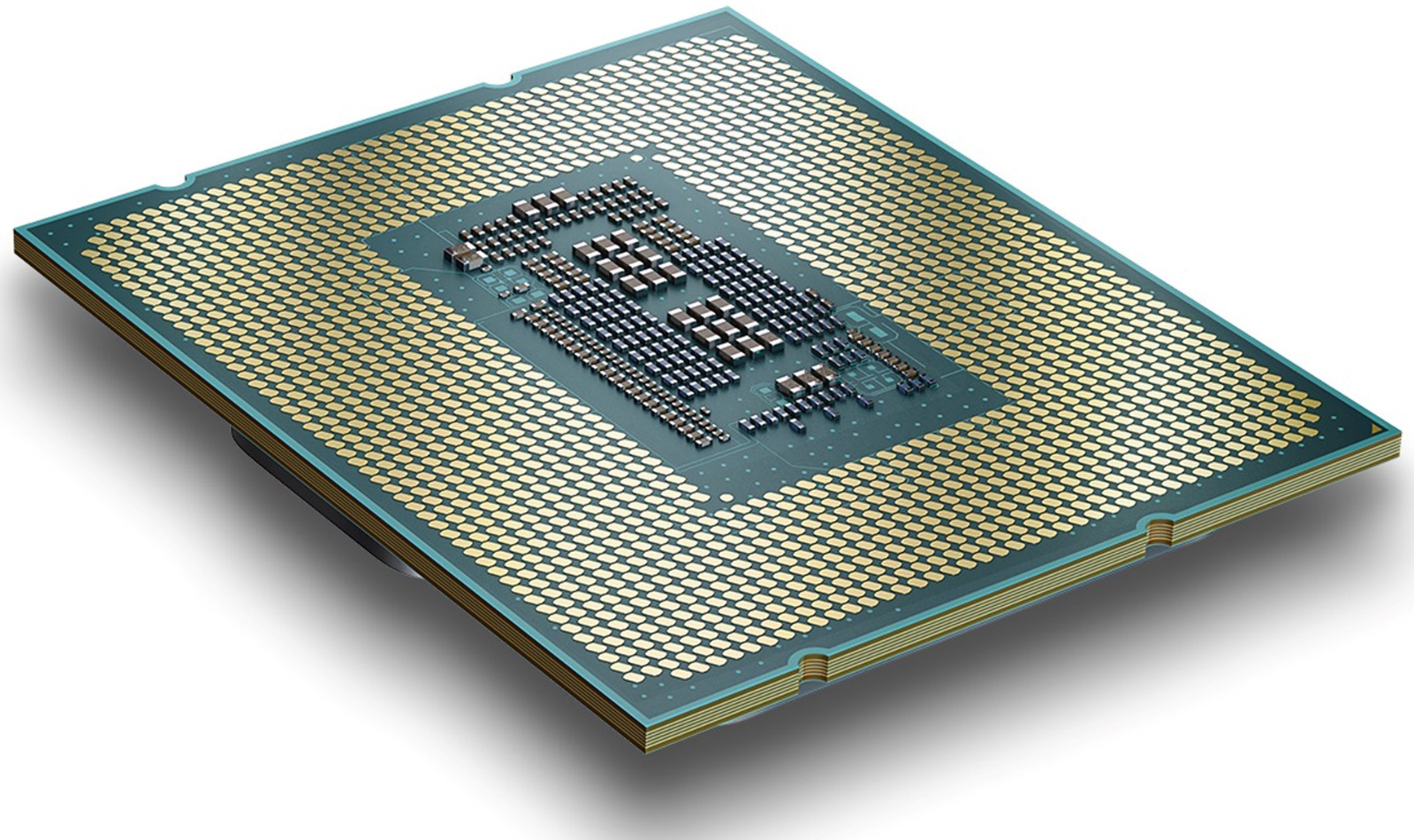
Back-to-back support means that Intel’s Reptorlik processors are compatible with coolers already on the market. Buying motherboards based on the Z790 chip only makes sense if you need eight PCIe 4.0 lanes and more USB 3.2 Gen 2×2 ports.
Intel’s new flagship processor reaches a scary temperature of 100 degrees Celsius in heavy processing.
Also, the AMD processor gets very hot during heavy processing similarly. These numbers are alarming at first glance, But Intel and AMD have made new generation processors, so they do not face problems at such temperatures.
When Intel unveiled the Core i9-13900K, it said that this processor would be handy for gamers and professional users. Experts’ review shows that Core i9-13900K has the upper hand in almost all processes related to content production compared to AMD’s flagship. Also, in most gaming benchmarks, the 13900K appears more robust than the previous generation and AMD’s flagship processor. The difference between the two processors is not that great, But it is still noteworthy that Intel’s flagship is more potent.
Anandtech
Anandtech media, which showed a positive reaction to the AMD Ryzen 7000 series processors, says that we knew from the beginning that Reptorlik does not come with revolutionary changes; Rather, it improves the platform introduced last year as much as possible. The same issue has caused the progress in the 13th generation of Intel processors to be less than in the new AMD processors.
Raptorlake is a modified version of Alder lake.
Raptorlik is a modified version of Alderlik. Thanks to powerful cores, Reptorlik achieves high performance in single-threaded processes and appears very strong in multi-threaded processes.
The power single-threaded and relatively light processing, high-power cores perform tasks well. Ful cores are based on the new Raptor Cove microarchitecture, But the low-power cores use the same Gracemont microarchitecture of the Alder Lake family. Increasing the frequency and capacity of the cache memory theoretically means Raptorlik should perform faster than Alderlik in almost all scenarios. In singles,, the number of low-power cores and frequency means that Reptorlik sometimes performs even better in multi-threaded processing.
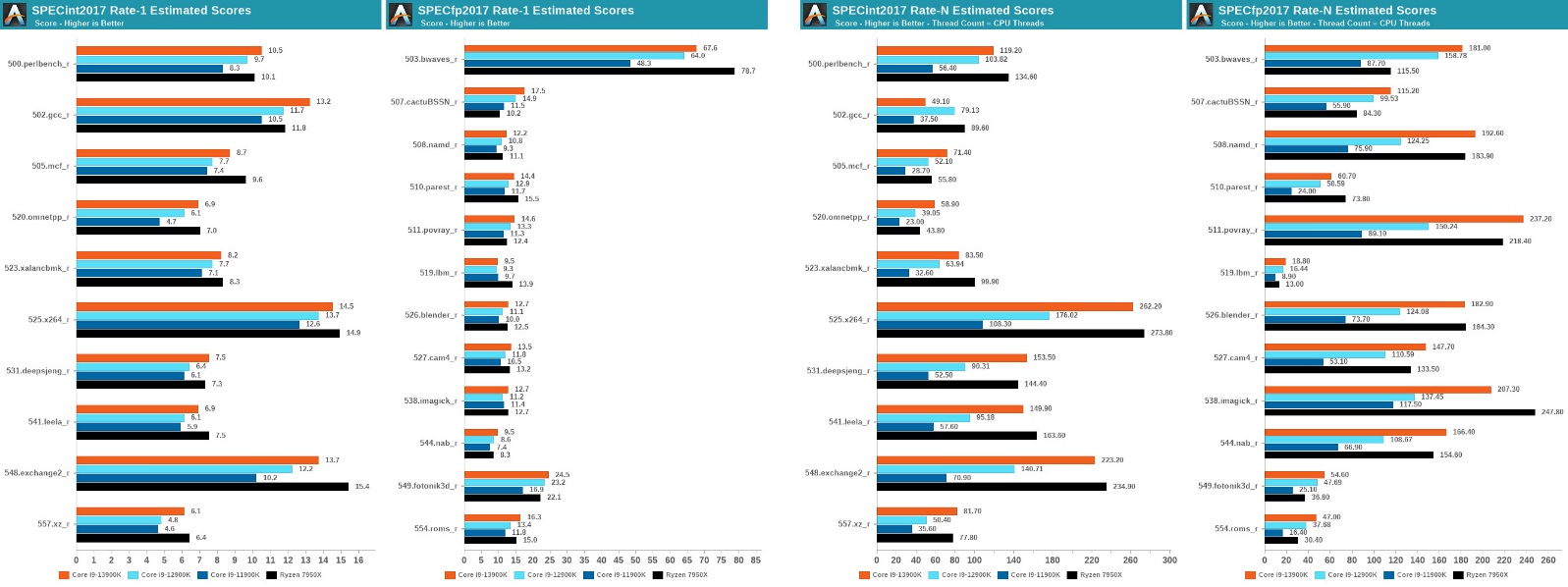
SPEC2017 is a set of standardized tests used to examine performance differences between systems, architectures, and microarchitectures.
In the SPECint2017 section, it can be seen that Intel has tried to improve single-threaded performance in the Raptorlic series.
The higher score of Reptorlik depends mainly on the frequency increase of processors of this family. More precisely, Intel has improved the voltage-to-frequency curve and, as a result, extracts more natural frequency from the processor. Intel’s official benchmarks also confirm such a claim. Improving memory speed and using a larger cache play a small role in increasing the power of Reptorlik.
The performance difference between Raptorlake and Alderlake single-threaded in SPECint2017 is not much. What’s more interesting is that the difference between the Core i9-13900K and the Ryzen 9 7950X is less than between Alderlake’s flagship and the Ryzen 9 5950X. In one of the tests, Intel’s 13th generation flagship processor beats AMD’s flagship processor by only 4%. Ryzen 9 7950X appears in one of the tests with a difference of 10% better than the Raptorlic flagship.
Raptorlik and Zen 4 are pretty much on par.
The SPEC2017 benchmark shows that Raptorlik and Zen 4 are now mainly on par, But Intel will probably have more to say next year; Because the 14th-generation Meteor Lake processors will change drastically.
In most of the SPECfp2017 tests, the Core i9-13900K outperforms its direct competitor, proving again that Reptorlik is a worthy competitor to Zen 4. The improvement in the overall performance of Alderlake compared to Rocketlake (11th generation) was acceptable. Meanwhile, the upgrades from Rocketlake to Raptorlake (a better measure of the hardware industry’s two-to-four-year upgrade cycle) are truly impressive.
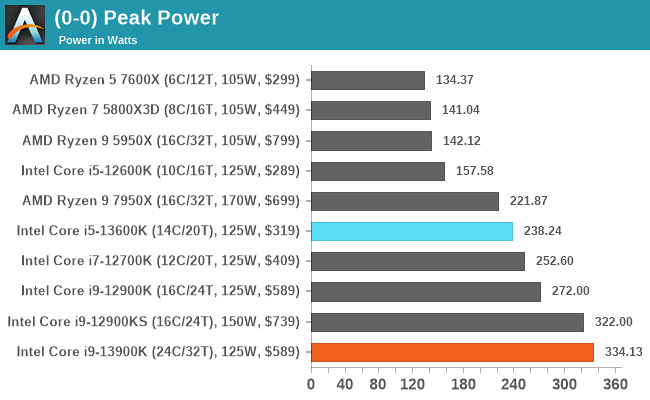
In a direct comparison of the peak power consumption, it is clear that the new Intel flagship has about 12 watts more power than Core i9-12900KS and 62 watts more than Core i9-12900K. Due to the increase in frequency, an increase in power consumption was expected. We should not forget that in the 13th generation, we are dealing with a 24-core processor, which has eight additional physical cores compared to the previous generation.
Core i5-13600K is higher than AMD Ryzen 9 7950X and slightly lower than Core i7-12700K in peak power consumption.
The energy consumption of Core i5-13600K is much higher than the previous generation (238 W vs. 157 W).
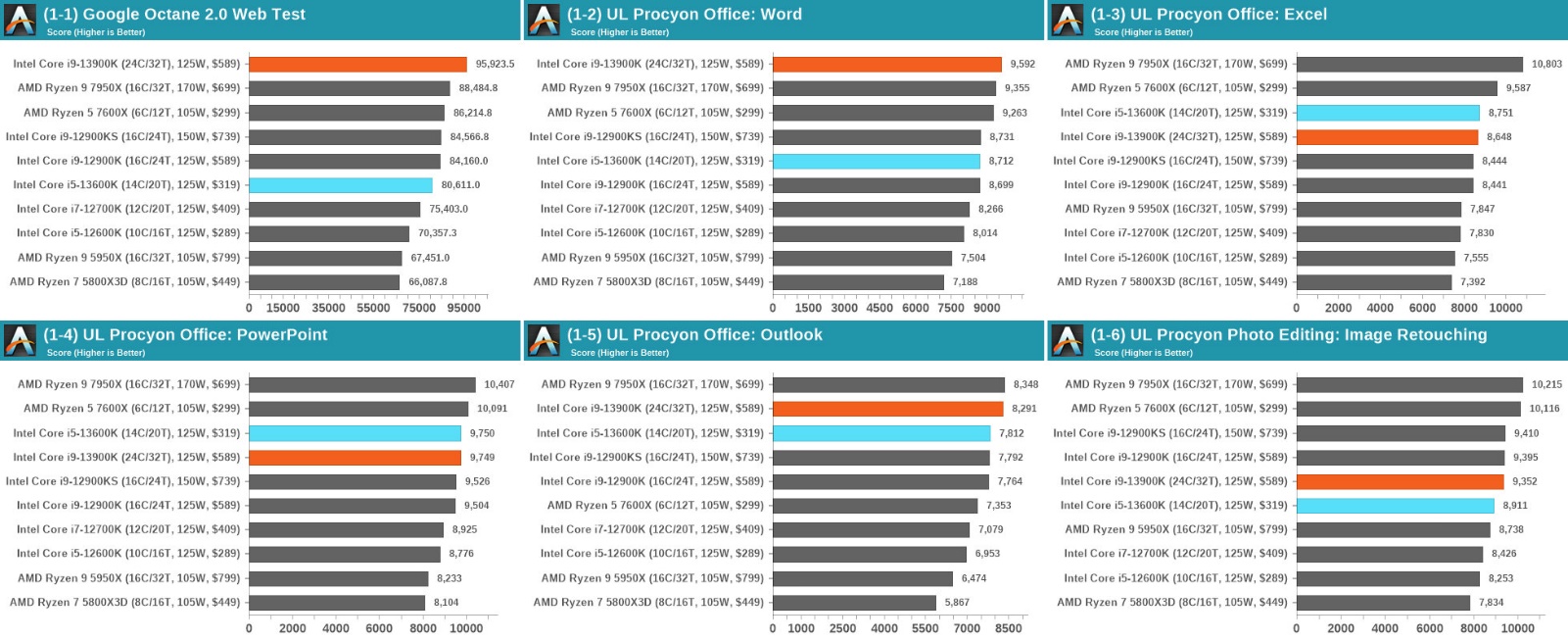
A look at general processing benchmarks shows that the Core i9-13900K performs very well, appearing on par with the Ryzen 9 7950X in many tests. This result is interesting because AMD’s flagship processor uses the completely new Zen 4 architecture and 5-nanometer lithography, While Intel’s flagship relies on 10nm lithography. The Core i5-13600K also appears very competitive. Even the 12th generation Core i9-12900KS processor is a worthy representative here.
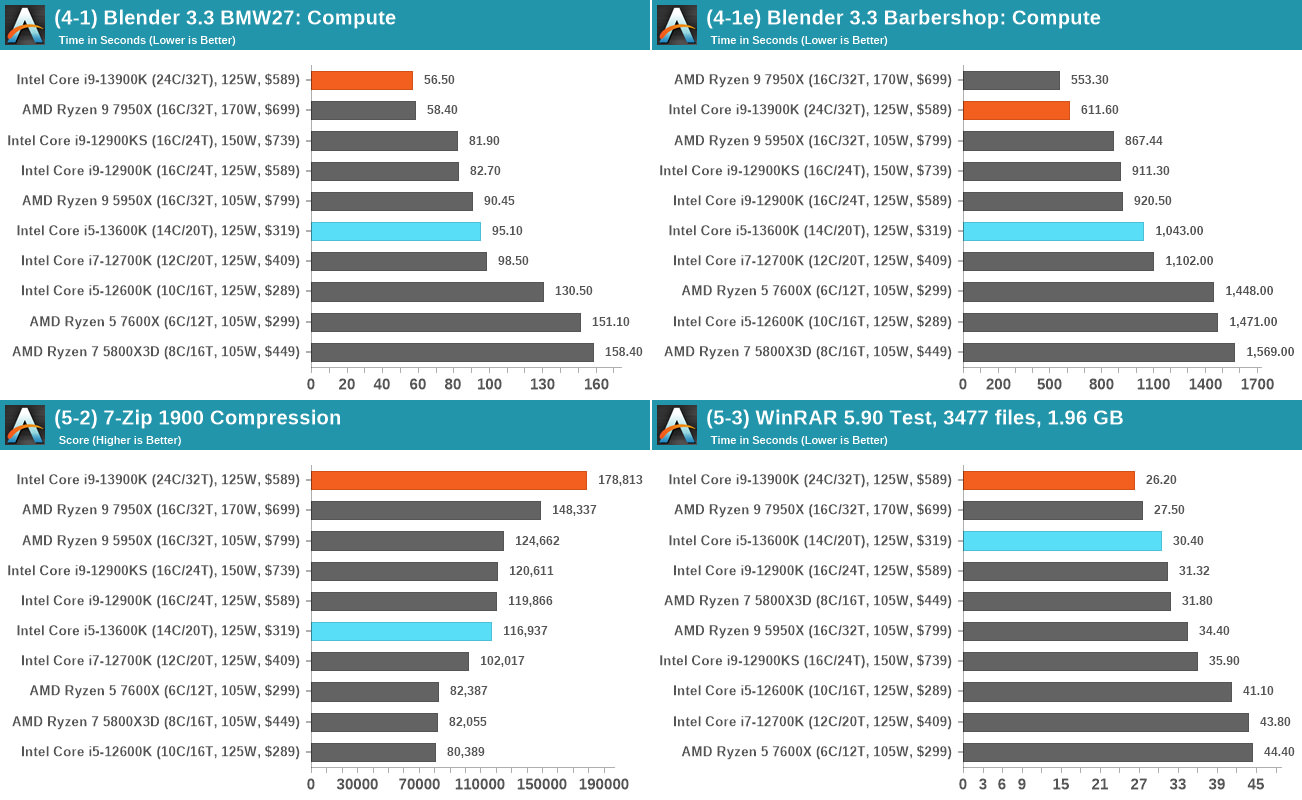
One of the most exciting things about modern processors is their encoding performance.
This function measures the processor’s power in encoding and decoding for secure data transfer and checks their power in converting different video formats to each other. Core i9-13900K has the upper hand in the Encode test when compressing files, But the Ryzen 9 7950X performs better in decompressing files. Better performance in this section is generally reserved for the AMD flagship.

CineBench and GeekBench benchmarks are vital in hardware reviews, But they are ancient. There are differences in single-core tests, But these differences are not very big. In the largely out-of-date benchmarks, the Core i9-13900K sometimes bests it, sometimes comes out on par with the Ryzen 9 7950X, and in some scenarios underperforms its rival.
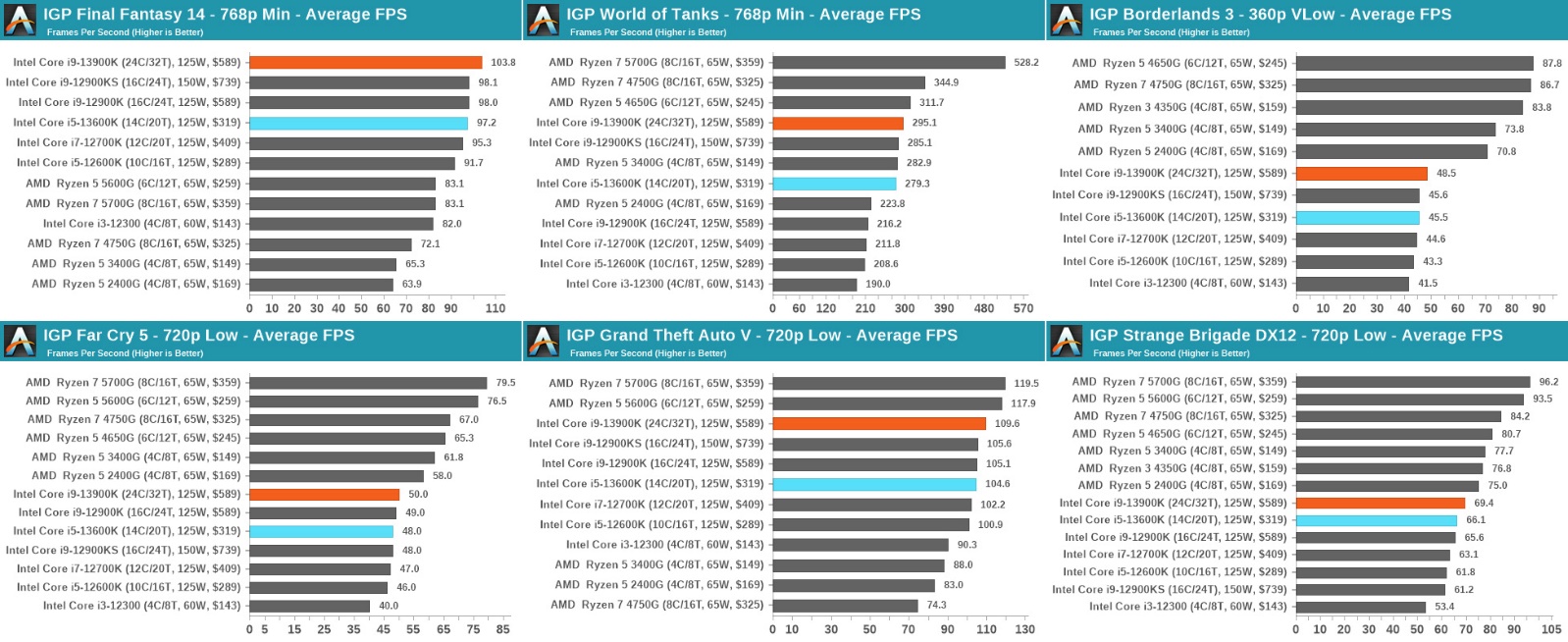
Intel has produced unlocked Raptorlic processors with an integrated graphics unit.
While using an iGPU unit in the processor is good news, you shouldn’t expect much from an integrated GPU. In the 12th and 13th generations, Intel used the Xe-LP graphics chip, which means that Alderlik and Reptorlik are almost at the same level in graphics processing.
In Anandtech tests, the modified architecture of Raptor Cove and the increase in cores made Raptorlik perform better than the previous generation in graphics processing. Raptorlake’s flagship processor is the best in this field, But Core i5-13600K also performs well. The Core i5-13600K performs slightly weaker than the flagship of the previous generation.
In the 2022 desktop-class processor war, there is no clear winner
Intel believes in Alderlake so much that it has again used the same architecture to compete with AMD’s redesigned architecture in the new generation. The most significant difference between Reptorlic and Alder Lake is the improvement of the voltage-frequency curve.
Intel was able to extract 200 MHz more frequency at the same voltage or, similarly, 50 millivolts less voltage at the same frequency. These changes are visible in the performance of the processor; Especially considering the frequency upgrade to 5.8 GHz in the new generation flagship; However, according to Anandtech, if the processor temperature exceeds 70 degrees Celsius, the frequency will be set to 5.7 GHz.
Anandtech says there is no clear winner in the 2022 desktop processor war. Those looking to buy a CPU should determine their needs and choose a processor based on their needs; Because, in some scenarios, Intel has the upper hand, But sometimes AMD does better.
Tom’s Hardware
Tom’s Hardware reviewer begins his review of Raptorlake CPUs by saying, “The $589 Core i9-13900K and the $319 Core i5-13600K inject revolutionary performance into their price range.” With an overall increase of almost 20% in gaming performance, Raptorlake processors intensify the competition with AMD’s next-generation processors.
Tom’s Hardware says Raptorlik offers the most powerful overclocking features and highest frequency caps on modern processors. Tom’s Hardware expert, in his reviews and relying on blue cooling, noticed that the frequency of 5.5 GHz is reached in the Core i7 model and 5.6 GHz in the Core i9 and Core i5 models. In these frequencies, the temperature of the processors reached about 96 to 98 degrees Celsius.

According to Tom’s Hardware reviews, the $589 Core i9-13900K processor is the best in the world at 1080p gaming, and at default settings, it performs 4 percent better than the AMD 430 Ryzen 7 5800X3D processor. Until the launch of Raptorlake, AMD Ryzen 7 5800X3D showed the best possible performance in this field. At 1440p resolution, the difference between the two processors becomes smaller.
Core i9-13900K is the best processor in the world for playing games with 1080p resolution.
If you’re not looking for the most powerful performance possible, the Core i7-13700K is a great choice. This $409 processor offers 95% of the processing power of the 13900K for $180 less. The 13700K is 18.8% faster than the 12700K. You can overclock it to match the performance of the Core i9-13900K.
The Core i5 model of the Raptorlic series beats its more prominent and expensive brothers in value. This $319 processor appears far beyond expectations in terms of gaming performance.
13600K is $30 more expensive than the previous generation, But in 1080p gaming, it beats all Ryzen 7000 series processors, with a slight difference. With Core i5-13600K overclocking, the performance of this expensive processor is on par with Ryzen 7 5800X3D.

In general benchmarks, it is seen that Core i5-13600K and Core i7-13700K processors have experienced a lot of improvement in single-threaded processing. Meanwhile, the overclocked Core i9-13900K model does not perform as expected in most single-threaded tests.
At default settings and when multithreading, the $699 Ryzen nine 7950X is roughly 3 percent faster than the Core i9-13900K.
The difference in product prices does not justify this difference in processing power. AMD’s new flagship is $110 more expensive than Intel’s flagship. Meanwhile, the Core i9-13900K is 22 percent faster than the Ryzen 9 7900X in multithreading. These two processors have a closing price.
The most potent Intel processor is more than $100 cheaper than the most powerful AMD processor.
You’ll see even more dramatic improvements as you move down the chart to Raptorlic’s mid-range models. The $409 Core i7-13700K is 33 percent faster in multithreading than the $399 Ryzen 7 7700X.
Meanwhile, the Core i5-13600K beats the $299 Ryzen 5 7600X processor by 34%. In these tests, Raptorlik once again shows off its noticeable generational leap. Raptorlic processors are the best in single-threaded processing and beat their competitors in the Ryzen family in all price ranges.
After overclocking, the difference between the new Intel and AMD processors increases. The Ryzen 7 5800X3D processor, which uses the previous generation architecture, is admirable in running some games; But in almost all other areas, it falls short against newer processors.

In a surprising event, Intel defeated Ryzen processors with a significant difference in multi-threaded processing with Alderlike combined architecture, even though Ryzen had been at the top of multi-threaded benchmarks for several years. The red team again grabbed attention with the Ryzen 9 7950X until Raptorlake processors arrived.
Intel processors are still more energy efficient than AMD processors.
To maintain their position in the processor market, the two companies, Intel and AMD, have had to increase energy consumption in the new generation. Still, AMD appears better in energy consumption thanks to TSMC’s 5nm lithography. Despite the significant increase in power consumption of the Ryzen 7000 compared to the Ryzen 5000, Reptorlic processors are still more energy efficient.
Tom’s Hardware says that Raptorlic processors have seen an explosive improvement over the 12th generation. With significant improvements, they outpace their competitors in gaming, single-threaded, and multi-threaded processing. The defeat of the Ryzen 7 5800X3D by Core i9-13900K is significant because AMD has long been known as the best gaming processor.
Raptorlake’s flagship Core i9-13900K is the most potent desktop-class processor on the market, albeit slightly different from AMD’s flagship. The Core i5-13600K is just as impressive, if not as impressive, as the 13900K, despite its $30 price increase.
PCMag
The PCMag expert, who considers the Core i9-13900K the best processor in the current market, says that Intel’s decision to use numerous cores and increase the processing frequency is wise. Still, the Reptorlic flagship overheats during heavy processing.
According to PCMag, the Core i9-13900K has “exceptional performance,” Thanks to its reasonable price, it can easily find a place in users’ hearts. The expert on this website also examined the performance of the integrated Core i9-13900K graphics processor and said that the iGPU unit performs very well.
Just a few weeks ago, AMD was at the top of the world’s best desktop processors with Ryzen 9 7950X; But the Ryzen 9 7950X’s reign as the fastest desktop processor didn’t last long, as Intel is back with the Core i9-13900K.
Core i9-13900K has “exceptional performance.”
According to the PCMag expert, Core i9-13900K consumes more energy than the previous generation and gets hotter than expected. Still, neither of these issues is problematic enough to prevent the 13900K from beating all other desktop-class processors.

Regarding raw processor performance, the Core i9-13900K outperformed the rest of the processors in almost all tests. The Ryzen 9 7950X processor, which has a higher price than Intel’s flagship, had problems with the 13900K in some tests, and in some tests, it even managed to beat the current most powerful processor in the Raptorlake family. “In terms of pure CPU performance, the Core i9-13900K outperforms AMD’s flagship,” says PCMag.
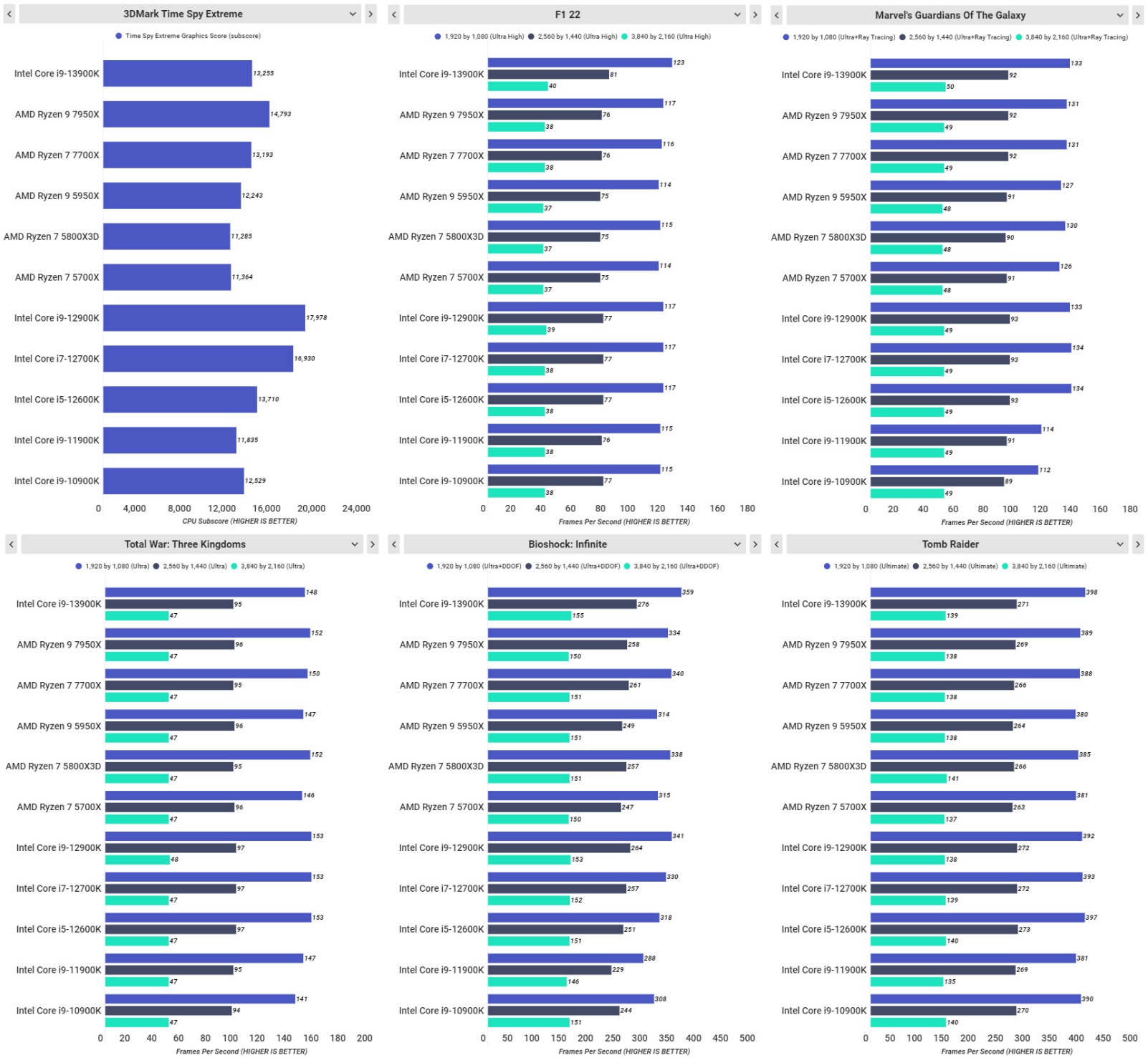
In processor gaming tests, many variables come into the equation, and according to PCMag’s reviews, the Core i9-13900K is not significantly better than the rest of the processors. PCMag says the 3DMark tool is probably buggy; Because it doesn’t make sense for the Core i9-12900K to emerge as a 12th-generation flagship rather than a 13th-generation flagship. The rest of the tests are more logical.
The integrated graphics of the 13900K chip performs very well
In the F1 22 game, the Core i9-13900K processor achieved its best win and defeated its main competitor in all possible resolutions. The 13900K performed more or less on par with several other processors in Marvel’s Guardians of the Galaxy. We also saw a fairly consistent performance in Total War: Three Kingdoms.
Several processors, including the AMD Ryzen 9 7950X and the three tested Alderlake series processors, performed slightly better at 1080p resolution. Intel’s flagship 13th generation processor did well in Tomb Raider (1080p resolution) and Bioshock: Infinite (all keys).

In the summary of its review, PCMag writes that Intel Core i9-13900K is undoubtedly the fastest consumer processor in the world; But whether such a processor will work for you is a question that needs further investigation. Reptorlic’s flagship performs on par with the AMD Ryzen 9 7950X in many tests, But the Core i9-13900K is “clearly the better option; Why? Because it is cheaper.”
Linus Tech Tips
YouTube channel expert Linus Tech Tips begins his review of Raptorlake CPUs with the key phrase: “Who would have believed that Intel would release the most affordable processor ever?” Intel’s 13th generation flagship is not only an expensive processor, But in gaming (and even productivity), it takes the first word in the market so that the reign of Ryzen 7000 series processors is much shorter than expected.
The opinion of Linus Tech Tips experts about Reptorlik processors is so positive that at the beginning of the review, they clearly say that Intel is not the video sponsor.

In gaming benchmarks, Intel and AMD flagship processors performed very well. In the CS: GO game, the most potent processor of the red team, the 7950X, appeared a little more robust than the 13900K; But the difference between the two was not so significant. And in the game Total War: Warhammer III, the mid-range processor 13600K appeared weaker than the 12th generation processor 12900K, But with a slight difference.
Intel ended the reign of Ryzen 7000 series processors very early with Raptorlake.
Intel’s new generation processors achieve their first major win in Far Cry 6. The average frame rate of 13900K is up to 12% better than AMD’s best processor. The 13600K once again proves to be a great value processor.
In Shadow of the Tomb Raider’s 1080p resolution, the Ryzen 7 5800X3D processor finally shows itself. The 7600X processor is better than the 13600K by a considerable margin, and at first glance, AMD seems to be the ultimate winner in Shadow of the Tomb Raider.
Still, the Intel 13900K delivers the best possible performance. Linus Tech Tips summarizes the graphics benchmarks and says that the 13900K is the best gaming processor on the market.

In the Cinebench R23 benchmark, Raptorlic’s flagship processor exceeds 40,000 points in the multithreading section and shows the best possible performance by a considerable margin. 13900K is better than its competitor, even in the single-threaded area (10%).
The 13600K processor does not register a high score, But passing 12700K shows that it is a competitive product among mid-range processors.
The benchmarks you saw were recorded on a system with DDR5 RAM. However, Linus Tech Tips reviews show that when using DDR4 RAM, the results show almost no significant changes, and in general, Intel still has the upper hand compared to AMD.
A CPU temperature check by Linus Tech Tips confirms other experts’ claims: Reptorlik overheats during heavy processing. For example, in one game, the 13900K was, on average, 10% hotter than the 12900K. Linus Tech Tips advises those interested in getting a 13900K to install a powerful cooler on the system.
Hardware Canucks
YouTube channel expert Hardware Canucks says that thanks to the release of 13th generation Raptorlic processors and AMD Ryzen 7000 series processors, the competition in the processor market has never been more enjoyable. At the highest level of desktop CPUs, we have two powerful processors with the same number of threads. According to Hardware Canucks, Reptorlik is the best processor that Intel has ever produced for the desktop platform.
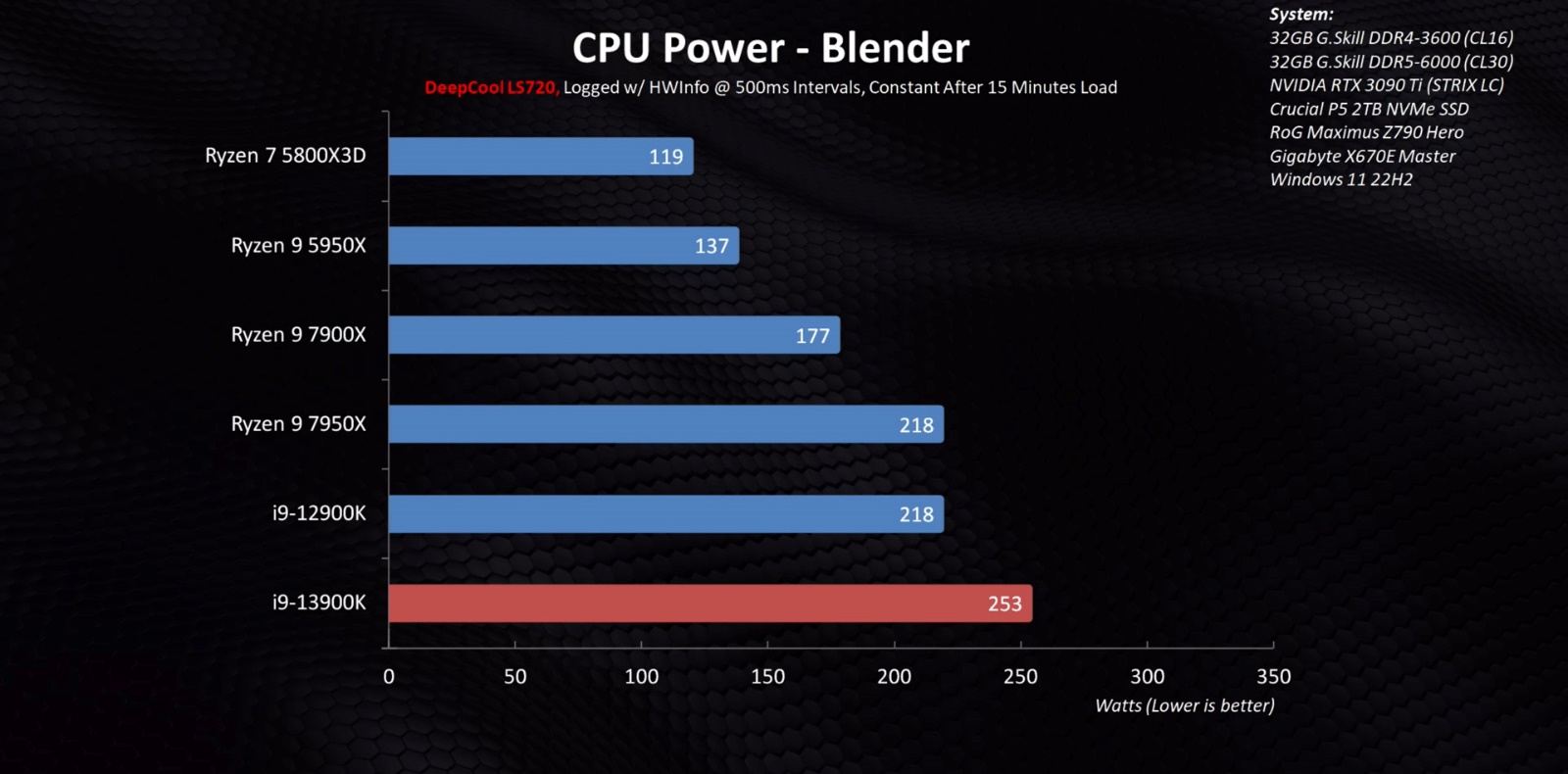
Hardware Canucks begins its review of the 13900K processor with power consumption, saying that Intel’s new flagship is the most power-hungry desktop processor on the market when processing the heaviest. This 35 W processor consumes more energy than the 12th generation flagship and the latest AMD flagship processor.

In the Cinebench R23 multi-core benchmark, the flagship 13900K outperforms all other processors, beating the 7950X by more than 1,000 points.
The 1,000-point difference shows that the 13900K and 7950X perform very similarly, But the vital thing to consider is the progress that Intel has experienced in one generation. The difference between the 13900K and the Alderlake flagship is about 12,000 points.
The Raptorlic flagship also appears more robust than its competitor in the single-core section of Cinebench R23, But by a much smaller margin. In most other benchmarks, the Reptorlik processor seems better, But sometimes we see better performance from 7950X.

Hardware Canucks says that Intel’s claims about the gaming performance of Raptorlake processors appear to be accurate and that these processors, especially the flagship model, are more potent than the competition.
The exciting thing is that in the CS: GO game benchmark, AMD’s flagship processor performs better, But 13900K takes revenge on its rival in Far Cry 6. In the games Forza Horizon 5 and God of War, we again see the better performance of the Intel flagship.
According to Hardware Canucks, at least statistically, the 13900K and 7950X processors are equal for all scenarios – from rendering to general processing and gaming.
In some scenarios, the Intel flagship is better; sometimes, the AMD flagship appears better.
In gaming, Intel claims to have the best processor in the world, and the Hardware Canucks expert in the summary of the 13900K review says that this processor is generally higher than the 7950X.

